
The Majestic Pacaya Volcano: Guatemala's Fiery Marvel
Experience the thrill of hiking an active volcano at Pacaya, Guatemala's fiery marvel, and witness breathtaking views and geothermal wonders.
Pacaya Volcano is one of Guatemala's most active and accessible volcanoes, offering an exhilarating experience for adventure seekers. Located just 30 kilometers south of Guatemala City, the volcano stands at over 2,500 meters and provides stunning views of the surrounding landscape. A hike up Pacaya is a unique opportunity to witness geothermal activity first-hand. As you ascend, you'll traverse through lush forests and lava fields, eventually reaching the active crater. Here, you can feel the heat emanating from the ground and see smoke rising from fissures, making for an unforgettable experience. Apart from the natural beauty and thrill, the journey to Pacaya is also culturally enriching. Local guides, often from nearby villages, share fascinating stories and insights about the volcano’s history and its significance to the local community. Whether you're an avid hiker or a casual traveler, Pacaya Volcano offers a blend of adventure, education, and stunning scenery that is hard to beat.
Local tips in Pacaya Volcano
- Wear sturdy hiking boots as the terrain can be rugged and uneven.
- Bring plenty of water and snacks, as the hike can take several hours.
- Hire a local guide to enrich your experience with knowledge and ensure safety.
- Visit early in the morning to avoid crowds and enjoy cooler temperatures.
- Check weather conditions before your hike; the trail can be slippery during wet seasons.
The Majestic Pacaya Volcano: Guatemala's Fiery Marvel
Pacaya Volcano is one of Guatemala's most active and accessible volcanoes, offering an exhilarating experience for adventure seekers. Located just 30 kilometers south of Guatemala City, the volcano stands at over 2,500 meters and provides stunning views of the surrounding landscape. A hike up Pacaya is a unique opportunity to witness geothermal activity first-hand. As you ascend, you'll traverse through lush forests and lava fields, eventually reaching the active crater. Here, you can feel the heat emanating from the ground and see smoke rising from fissures, making for an unforgettable experience. Apart from the natural beauty and thrill, the journey to Pacaya is also culturally enriching. Local guides, often from nearby villages, share fascinating stories and insights about the volcano’s history and its significance to the local community. Whether you're an avid hiker or a casual traveler, Pacaya Volcano offers a blend of adventure, education, and stunning scenery that is hard to beat.
When is the best time to go to Pacaya Volcano?
Iconic landmarks you can’t miss
Centro de visitantes, Volcan Pacaya
Explore the breathtaking landscapes of Volcan Pacaya, an active volcano in Guatemala, offering thrilling hikes and stunning views.
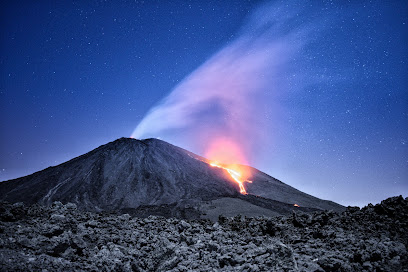
Entrada: Parque Nacional Volcan De Pacaya
Discover the breathtaking landscapes and active volcanic wonders at Volcan De Pacaya National Park in Guatemala, a paradise for adventure seekers.
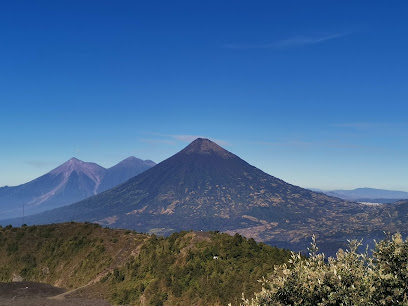
Volcán Pacaya
Discover the thrilling beauty of Volcán Pacaya, an active volcano in Guatemala offering breathtaking views and unforgettable hiking experiences.

Pacaya
Explore the accessible and active Pacaya Volcano, an iconic adventure in Guatemala boasting breathtaking views and unique volcanic experiences.
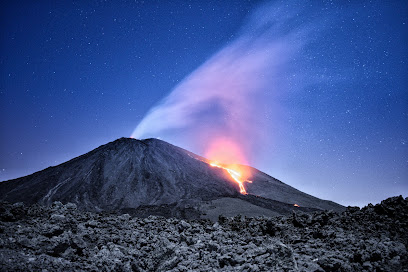
Unmissable attractions to see
Corazón de Agua
Discover the enchanting Corazón de Agua, a serene nature preserve in Guatemala, perfect for nature lovers and adventure seekers alike.
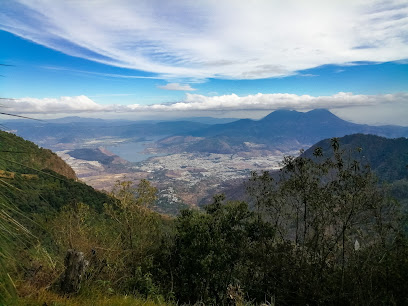
Parque Natural Calderas
Discover the serene landscapes and diverse ecosystems of Parque Natural Calderas, a must-visit natural attraction in Santa Elena Barillas, Guatemala.
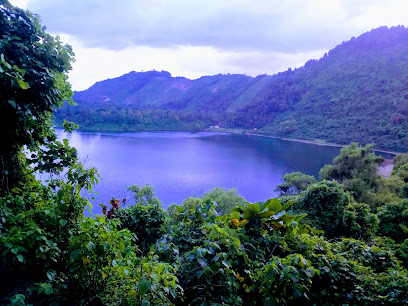
Cerro Chino
Cerro Chino: Experience breathtaking hikes and stunning landscapes in the heart of Guatemala’s natural beauty.
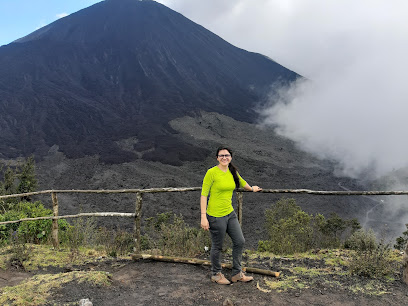
Laguna Escondida Calderas
Laguna Escondida Calderas: A Serene Natural Lagoon Surrounded by Lush Landscapes Near Pacaya Volcano, Perfect for Nature Lovers and Adventure Seekers.
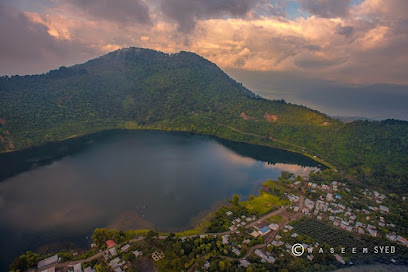
Castillo de Dorión
Explore the captivating Castillo de Dorión in Villa Nueva, a historical treasure showcasing Guatemala's rich heritage and breathtaking views.
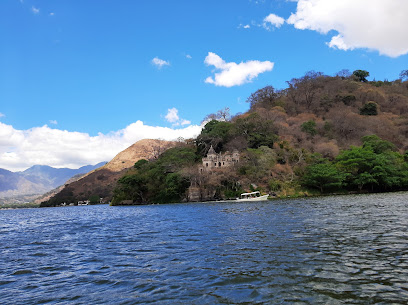
Eólico Viento Blanco Park
Explore the serene Eólico Viento Blanco Park, an ecological paradise near San Vicente Pacaya, ideal for nature lovers and adventure seekers.

Mirador 1 faldas Pacaya
Discover the breathtaking views at Mirador 1 Faldas Pacaya, a serene spot to experience the beauty of Guatemala's iconic volcano.
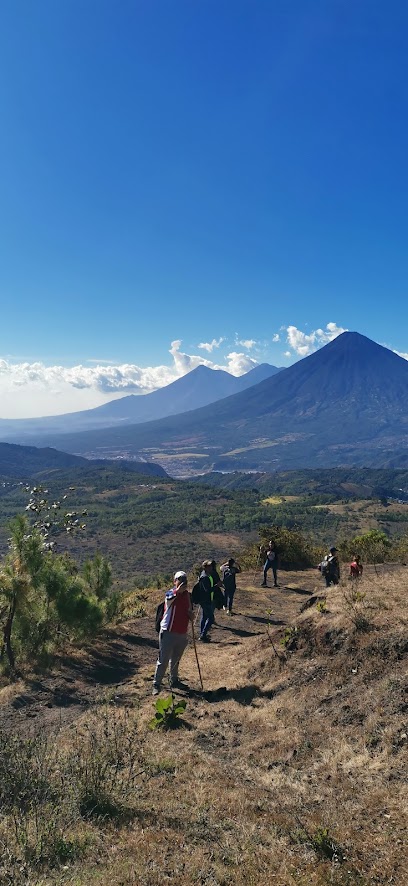
Rios de lava volcan pacaya
Experience the thrill of hiking Volcán Pacaya, Guatemala's active volcano, with stunning views and unique lava flows for an unforgettable adventure.
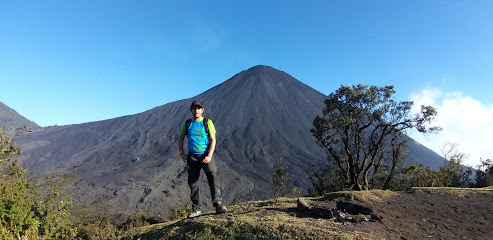
Bajada el Arenal
Discover the breathtaking beauty of Bajada el Arenal, a premier hiking destination in San Vicente Pacaya, perfect for nature lovers and adventure seekers.
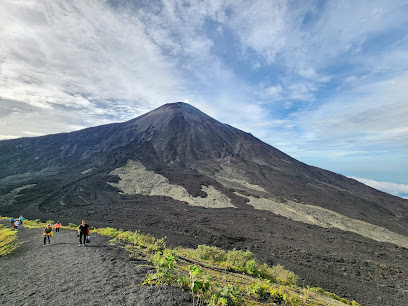
EL CIELO
Discover the breathtaking hiking trails of El Cielo in San Vicente Pacaya, a paradise for nature lovers and adventure seekers alike.
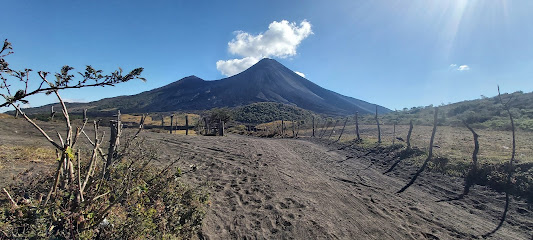
Finca Laguacate Laguna de Calderas
Explore Finca Laguacate Laguna de Calderas, a stunning natural attraction in Guatemala, perfect for adventure and relaxation amidst breathtaking landscapes.
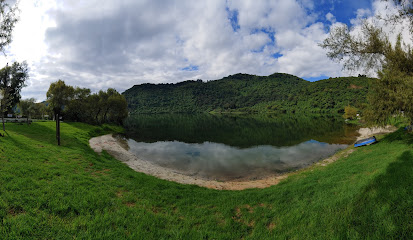
GT Business and Travel
Explore Guatemala's breathtaking landscapes and rich culture with GT Business and Travel, your trusted sightseeing tour agency in Jocotenango.

Rancho Pacaya
Discover the breathtaking beauty and diverse wildlife of Rancho Pacaya, a top hiking destination in Bejucal, Guatemala, set against a stunning volcanic backdrop.
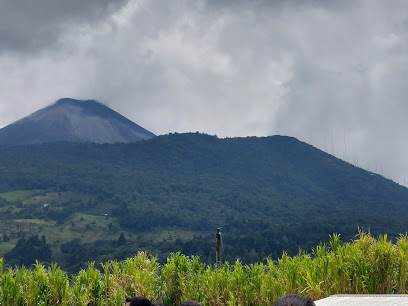
Sendero cerro chino volcan pacaya gt
Discover the breathtaking views and unique biodiversity of Cerro Chino at Volcan Pacaya, a premier hiking destination in Guatemala.
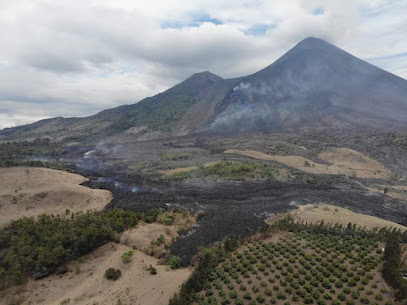
Reserva Natural Bosques del Lago
Discover the serene beauty of Reserva Natural Bosques del Lago in El Cerrito, a perfect retreat for nature lovers and tranquility seekers.
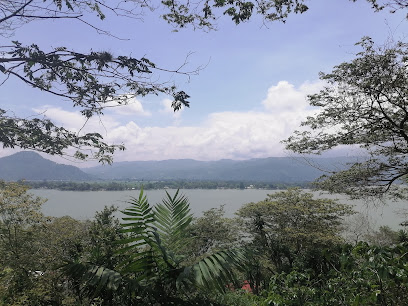
Essential places to dine
Antigua Boreal - Deep Dish pizza
Experience the best deep-dish pizza in Antigua Guatemala at Antigua Boreal - where flavor meets tradition in every slice.
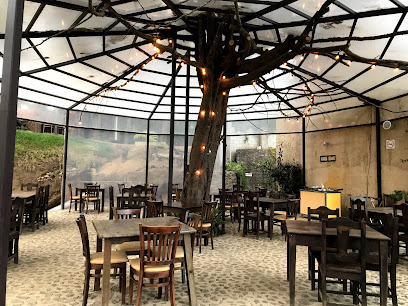
Cafe Sky Bar
Discover stunning views and delicious cuisine at Cafe Sky Bar in Antigua Guatemala - an unmissable experience for every traveler.
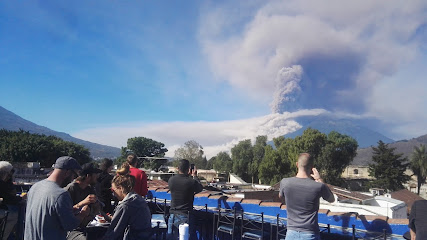
Finca El Barretal
Experience authentic Guatemalan cuisine at Finca El Barretal surrounded by breathtaking natural beauty.
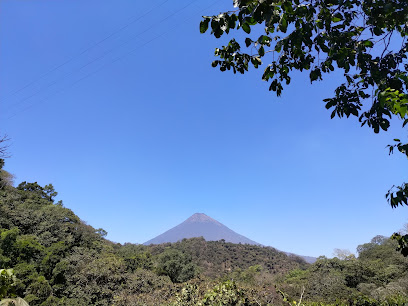
Pacaya Bistro
Experience the authentic flavors of Guatemala at Pacaya Bistro in San Vicente Pacaya - where every meal tells a story.
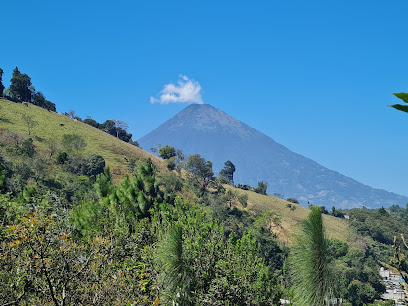
El Jardín del Cabro BBQ Guatemala
Discover the taste of authentic American barbecue at El Jardín del Cabro BBQ in Pacaya, Guatemala - where flavor meets hospitality!
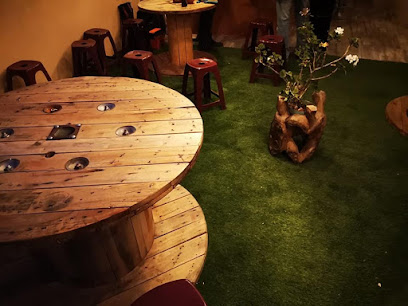
Restaurante El Volcan
Experience authentic Guatemalan flavors at Restaurante El Volcan in San Vicente Pacaya amidst stunning volcanic views.
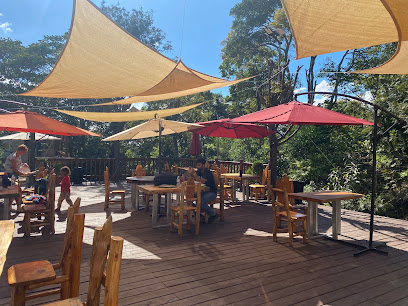
Pizza Pacaya
Discover authentic flavors at Pizza Pacaya - where every slice tells a story and every meal is an adventure.
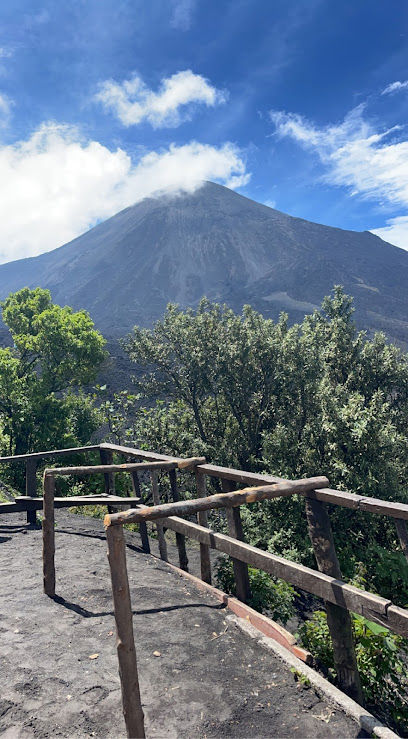
Pacaya Coffe Restaurant
Experience authentic Guatemalan cuisine at Pacaya Coffee Restaurant, where local flavors meet stunning volcanic views in San Vicente Pacaya.
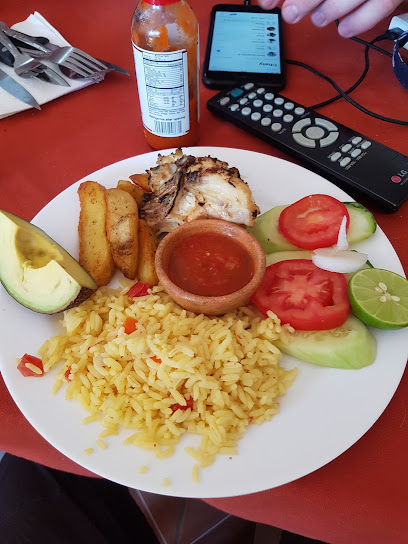
Pacaya Restaurante
Experience the rich flavors of Guatemalan cuisine amidst stunning landscapes at Pacaya Restaurante in Los Pocitos.
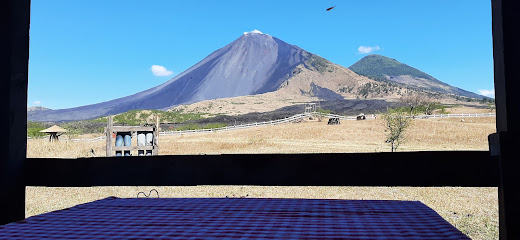
Markets, malls and hidden boutiques
Volcan de pacaya
Experience the stunning landscapes and thrilling hikes at Volcan de Pacaya, one of Guatemala's most active and beautiful volcanoes.
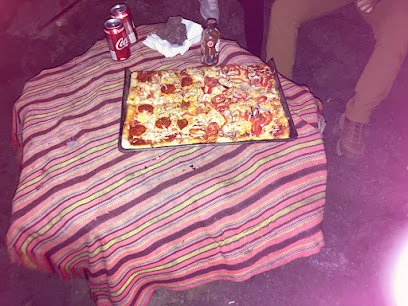
Restaurante humito en tus ojos
Discover the authentic flavors of Guatemala at Restaurante Humito en Tus Ojos, a charming grocery store and culinary hotspot in San Vicente Pacaya.

Paseo San Vicente
Discover the heart of shopping and dining at Paseo San Vicente in San Vicente Pacaya, a vibrant destination that blends local culture with modern convenience.
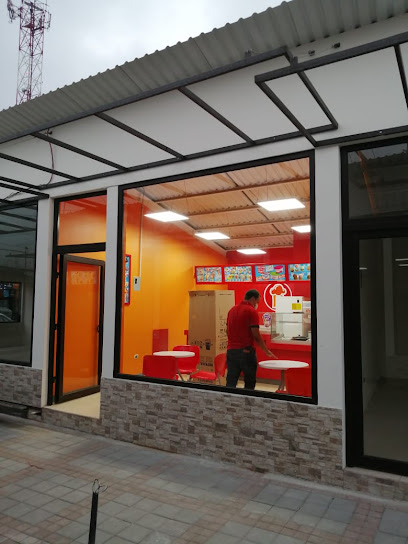
INNOVA GT
Explore INNOVA GT in Amatitlán for unique handmade crafts and immerse yourself in the vibrant culture of Guatemala.
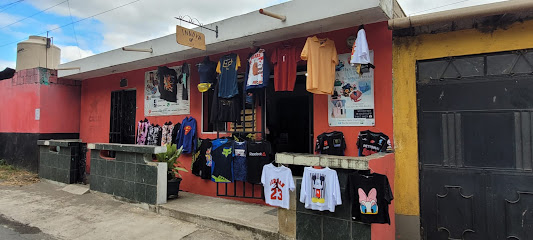
Super del barrio
Explore the vibrant local culture at Super del barrio in San Vicente Pacaya, where unique Guatemalan products await your discovery.

TIENDA LOS ÁNGELES
Explore Tienda Los Ángeles for unique home goods and authentic Guatemalan crafts in San Vicente Pacaya.
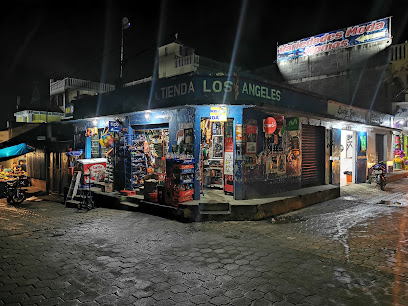
Lava store
Explore the unique Lava Store in San Vicente Pacaya for volcanic-inspired crafts, authentic Guatemalan souvenirs, and a taste of local culture.
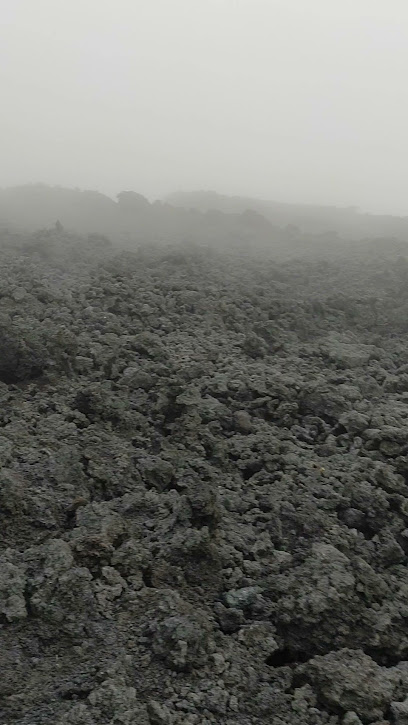
Comercial San José
Discover local literature and immerse in the cozy atmosphere of Comercial San José, a must-visit bookstore in San Vicente Pacaya.

Palin
Explore the vibrant flavors of Palin, a local grocery store where fresh produce and unique Guatemalan treats await every traveler.

Tienda Don Ticho
Explore the flavors of Guatemala at Tienda Don Ticho, a charming grocery store in San Vicente Pacaya, offering local delights and unique souvenirs.

Valentiine Store
Explore the vibrant fashion scene at Valentiine Store, a unique destination for Guatemalan accessories and local artistry in San Vicente Pacaya.

Rocio's Shop
Explore Rocio's Shop in San Vicente Pacaya for unique beauty products that showcase the artistry of Guatemalan craftsmanship.

Tienda Carmencita
Explore Tienda Carmencita in San Vicente Pacaya, a gem for home goods that showcases local craftsmanship and vibrant Guatemalan culture.

TIENDA LA BENDICION
Explore the heart of San Vicente Pacaya at Tienda La Bendición, where local products and friendly service await your discovery.

Kreamax, Libreria y Miscelanea
Discover Kreamax in San Vicente Pacaya: a cozy bookstore filled with local literature, warm atmosphere, and unique cultural experiences.
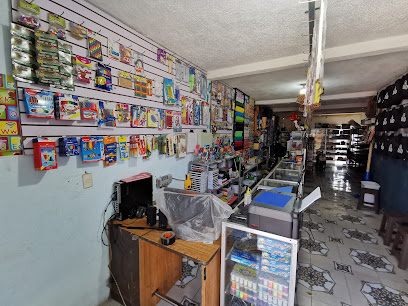
Essential bars & hidden hideouts
Ulew Cocktail Bar
Experience the vibrant nightlife of Antigua Guatemala at Ulew Cocktail Bar, offering creative cocktails and a lively atmosphere perfect for socializing.
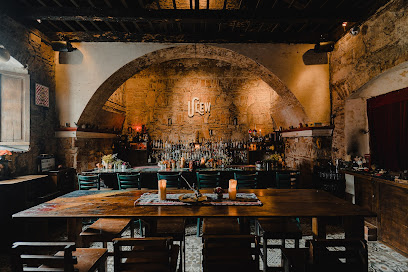
Restaurante Y Disco Bar A La Antigua
Savor local flavors and enjoy vibrant nightlife at Restaurante Y Disco Bar A La Antigua, a grill and bar in Amatitlán offering a unique dining experience.
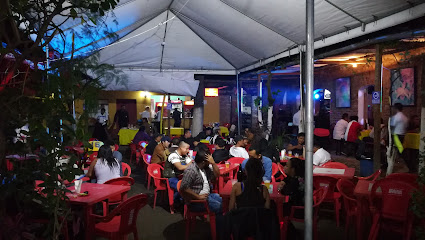
Pacaya Bistro
Experience the rich flavors of Guatemala at Pacaya Bistro, a culinary gem in San Vicente Pacaya offering local dishes in a cozy atmosphere.

Restaurante El Volcan
Experience the authentic flavors of Guatemalan cuisine at Restaurante El Volcan, a culinary haven in San Vicente Pacaya.
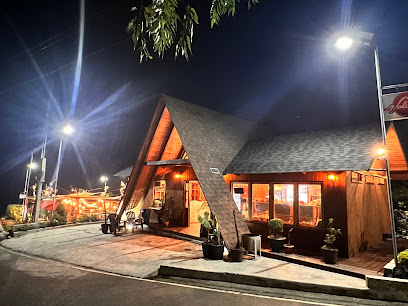
Bar Oasis
Experience the vibrant nightlife at Bar Oasis in Amatitlán, where refreshing drinks and a lively atmosphere await every traveler.
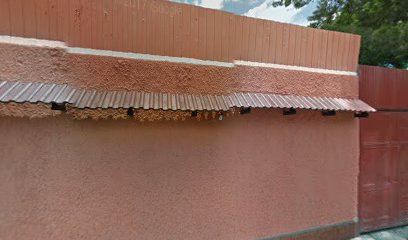
Pizza Pacaya
Discover the authentic taste of Italy in San Vicente Pacaya with handcrafted pizzas made from fresh, local ingredients.
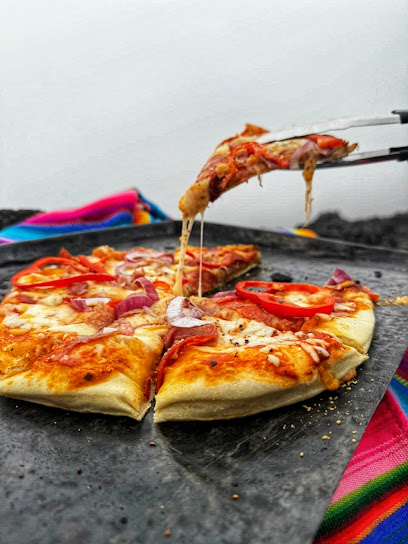
Retro Restaurant, Food, Drinks & Music
Dive into a unique culinary experience at Retro Restaurant in San Vicente Pacaya, where food, drinks, and live music come together for an unforgettable night.
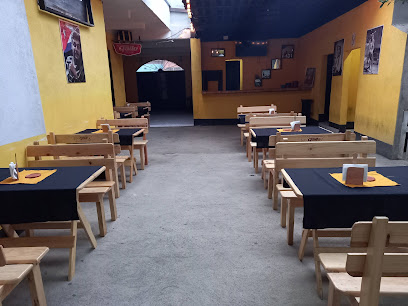
Restaurante y Discoteca Rustik
Experience the vibrant culinary and nightlife scene at Restaurante y Discoteca Rustik in San Vicente Pacaya, a true taste of local culture.

Tagus Bar Palin
Discover the vibrant atmosphere and local flavors at Tagus Bar Palin, the perfect spot for a night out in Guatemala!
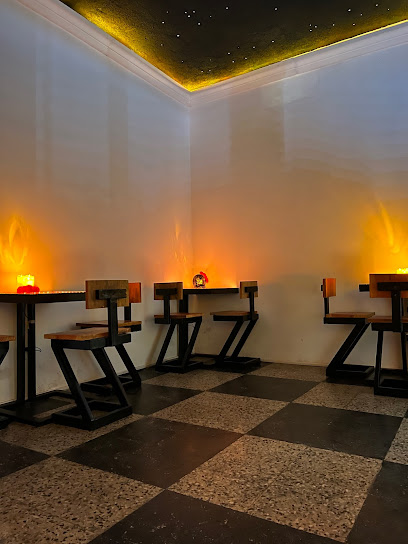
BAR THE JOCKER
Discover the lively ambiance of Bar The Joker, where vibrant cocktails and local snacks combine for an unforgettable night in San Rafael.
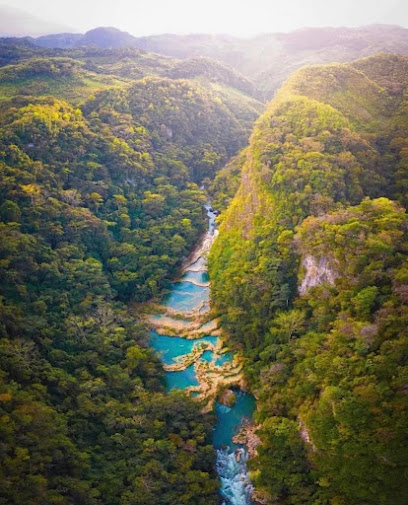
DonD'vinny
Experience the lively atmosphere and refreshing drinks at DonD'vinny, the heart of San Vicente Pacaya's nightlife scene.
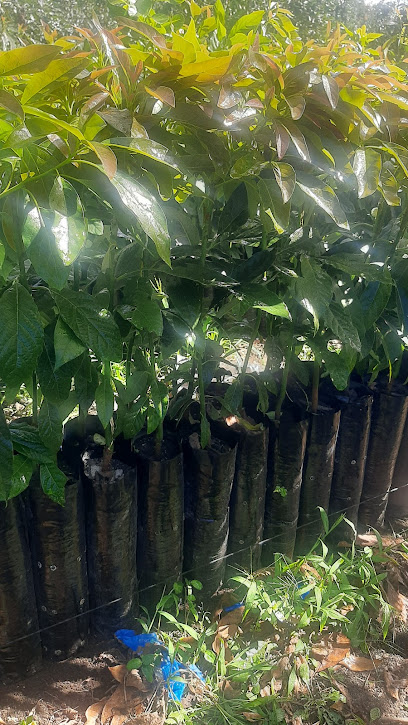
Tienda Angelica
Experience the unique charm of Tienda Angelica, a cozy bar in San Vicente Pacaya, perfect for relaxing with drinks and connecting with locals.

El trancas Algo Diferente
Discover the flavors of Guatemala at El Trancas Algo Diferente, Palín's premier grill destination for an authentic culinary experience.

M9mentos bar cafe
Discover the vibrant ambiance of M9mentos Bar Cafe in Palín, where locals and tourists gather for refreshing drinks and a taste of local culture.

CAFE BAR DON KOKA
Discover the vibrant atmosphere of Café Bar Don Koka, where local flavors and friendly vibes merge for an unforgettable night in Ciudad de Guatemala.

Local Phrases about Pacaya Volcano
-
- HelloHola
[oh-lah] - GoodbyeAdiós
[ah-dee-ohs] - YesSí
[see] - NoNo
[noh] - Please/You're welcomePor favor/De nada
[por fah-vor/deh nah-dah] - Thank youGracias
[grah-see-as] - Excuse me/SorryPerdón/Lo siento
[pair-dohn/loh see-en-toh] - How are you?¿Cómo estás?
[koh-moh ehs-tahs] - Fine. And you?Bien. ¿Y tú?
[bee-en. ee too] - Do you speak English?¿Hablas inglés?
[ah-blahs een-glays] - I don't understandNo entiendo
[noh ehn-tee-en-doh]
- HelloHola
-
- I'd like to see the menu, pleaseMe gustaría ver el menú, por favor
[may goo-stah-ree-ah vehr ehl meh-noo, poor fah-vor] - I don't eat meatNo como carne
[noh koh-moh kahr-neh] - Cheers!¡Salud!
[sah-lood] - I would like to pay, pleaseMe gustaría pagar, por favor
[may goo-stah-ree-ah pah-gar, poor fah-vor]
- I'd like to see the menu, pleaseMe gustaría ver el menú, por favor
-
- Help!¡Ayuda!
[ah-yoo-dah] - Go away!¡Vete!
[veh-teh] - Call the Police!¡Llama a la Policía!
[yah-mah ah lah poh-lee-see-ah] - Call a doctor!¡Llama a un médico!
[yah-mah ah oon meh-dee-koh] - I'm lostEstoy perdido/a
[ehs-toy pair-dee-doh/dah] - I'm illEstoy enfermo/a
[ehs-toy ehn-fehr-moh/dah]
- Help!¡Ayuda!
-
- I'd like to buy...Me gustaría comprar...
[may goo-stah-ree-ah kohm-prar...] - I'm just lookingSolo estoy mirando
[soh-loh ehs-toy meer-ahn-doh] - How much is it?¿Cuánto cuesta?
[kwan-toh kwehs-tah] - That's too expensiveEsto es demasiado caro
[ehs-toh ehs deh-mah-syah-doh kah-roh] - Can you lower the price?¿Puede rebajar el precio?
[pweh-deh reh-bah-har ehl preh-see-oh]
- I'd like to buy...Me gustaría comprar...
-
- What time is it?¿Qué hora es?
[keh oh-rah ehs] - It's one o'clockEs la una en punto
[ehs lah oo-nah ehn poon-toh] - Half past (10)Siete y media
[see-eh-teh ee meh-dee-ah] - MorningMañana
[mah-nyah-nah] - AfternoonTarde
[tahr-deh] - EveningNoche
[noh-che] - YesterdayAyer
[ah-yehr] - TodayHoy
[oy] - TomorrowMañana
[mah-nyah-nah] - 1Uno
[oo-noh] - 2Dos
[dohs] - 3Tres
[trehs] - 4Cuatro
[kwah-troh] - 5Cinco
[seen-koh] - 6Seis
[says] - 7Siete
[see-eh-teh] - 8Ocho
[oh-choh] - 9Nueve
[nweh-veh] - 10Diez
[dyehs]
- What time is it?¿Qué hora es?
-
- Where's a/the...?¿Dónde está...?
[dohn-deh ehs-tah] - What's the address?¿Cuál es la dirección?
[kwal ehs lah dee-rehk-syon] - Can you show me (on the map)?¿Puede mostrarme (en el mapa)?
[pweh-deh mohs-trar-meh (ehn ehl mah-pah)] - When's the next (bus)?¿Cuándo es el próximo (autobús)?
[kwan-doh ehs ehl proh-ssee-moh (ow-toh-boos)] - A ticket (to ....)Un boleto (a ...)
[oon boh-leh-toh (ah ...)]
- Where's a/the...?¿Dónde está...?
History of Pacaya Volcano
-
Pacaya Volcano, part of the Central American Volcanic Arc, has been active for approximately 23,000 years. Its geological significance is paramount, as it serves as a prime example of subduction zone volcanism, where the Cocos Plate slides beneath the Caribbean Plate. Ancient Mayan civilizations living in the region might have witnessed its eruptions, though direct evidence linking them to specific eruptions is scarce.
-
One of the earliest documented eruptions of Pacaya occurred in 1565, shortly after the Spanish Conquest. Spanish settlers recorded the event, noting the dramatic display of lava and ash. This eruption marked the beginning of Pacaya's known eruptive history, which has been characterized by frequent activity.
-
In 1870, Pacaya experienced a significant eruption that impacted the surrounding areas. The eruption produced lava flows and ash that affected local agriculture and settlements. This event highlighted the volcano's potential threat to the communities living nearby and underscored the need for ongoing monitoring.
-
After a period of dormancy, Pacaya reawakened in 1961 with a series of explosive eruptions. This renewed activity drew the attention of volcanologists and prompted the establishment of observational posts. The 1961 eruption was significant for its duration and intensity, lasting several years and altering the landscape around the volcano.
-
One of the most notable eruptions in recent history occurred in May 2010. This powerful event caused widespread damage, including the destruction of nearby villages and the closure of Guatemala City's international airport due to ashfall. The eruption underscored the importance of disaster preparedness and the resilience of the local communities.
-
Pacaya Volcano holds a special place in the cultural fabric of the region. Local legends often speak of the volcano's fiery spirit, and it features prominently in indigenous folklore. The surrounding communities have a deep respect for Pacaya, viewing it as both a life-giving force and a potential threat. Festivals and rituals are sometimes held to honor the volcano and seek protection from its eruptions.
-
In recent decades, Pacaya has become a popular destination for tourists seeking adventure and natural beauty. The establishment of Pacaya Volcano National Park has facilitated eco-tourism and conservation efforts. Guided tours offer visitors a chance to witness the volcano's activity up close, while also educating them about the importance of preserving this unique geological site.
Pacaya Volcano Essentials
-
Pacaya Volcano is located about 25 kilometers south of Guatemala City. The nearest major airport is La Aurora International Airport (GUA) in Guatemala City. From the airport, you can take a taxi, shuttle service, or rent a car to reach the volcano. The journey typically takes around 1 to 1.5 hours by road. There are also organized tours that provide transportation directly from Guatemala City or Antigua to Pacaya Volcano.
-
Once at the base of Pacaya Volcano, you can choose to hike up the volcano or take a guided tour. Guided tours often include transportation from nearby cities and provide a more comprehensive experience. If you prefer to hike independently, make sure to follow marked trails and adhere to safety guidelines. Local taxis and buses are also available for transportation to nearby towns and attractions.
-
The official currency in Guatemala is the Guatemalan Quetzal (GTQ). Credit cards are accepted in some hotels, restaurants, and shops in larger cities, but it is advisable to carry cash, especially when visiting rural areas and smaller establishments. ATMs can be found in major towns, so withdraw sufficient cash before heading to the volcano to ensure you have enough funds for the trip.
-
Pacaya Volcano and its surrounding areas are generally safe for tourists, but it is important to take standard precautions. Avoid walking alone at night and keep an eye on your belongings in crowded places. Some neighborhoods in Guatemala City and other urban areas have higher crime rates, so consult local advice on which areas to avoid. Always stay on marked trails when hiking and follow the guidance of local authorities and tour guides.
-
In case of an emergency, dial 120 for medical assistance or 110 for police. There are medical facilities and pharmacies available in nearby towns such as Antigua. It is recommended to have travel insurance that covers medical emergencies and evacuation. For volcanic activity updates, listen to local radio, follow official social media channels, or check with your tour guide or accommodation staff.
-
Fashion: Do wear comfortable and sturdy hiking shoes, and dress in layers to adjust to changing weather conditions. Avoid wearing flip-flops or sandals on the hike. Religion: Do respect local customs and traditions. If visiting religious sites in nearby towns, dress modestly and cover your shoulders and knees. Public Transport: Do use reputable transportation services. Avoid using unlicensed taxis or hitchhiking. Greetings: Do greet locals with a friendly 'Hola' or 'Buenos días.' Handshakes are common, but a smile and nod are also acceptable. Eating & Drinking: Do try local foods and drinks. Hydrate well, especially during the hike. Don't drink tap water; opt for bottled water instead.
-
To experience Pacaya Volcano like a local, consider joining a tour led by local guides who can provide insights into the area’s history and geology. Visit nearby villages like San Vicente Pacaya to experience local culture and cuisine. Renting a horse for part of the hike is a popular option among locals and can make the ascent easier. Lastly, try the local specialty of marshmallows roasted over volcanic heat, a unique and tasty treat.
Nearby Cities to Pacaya Volcano
-
Things To Do in Guatemala City
-
Things To Do in Panajachel
-
Things To Do in Lake Atitlán
-
Things To Do in Chichicastenango
-
Things To Do in Chalchuapa
-
Things To Do in Quetzaltenango
-
Things To Do in Santa Ana
-
Things To Do in Copán Ruinas
-
Things To Do in San Salvador
-
Things To Do in La Libertad
-
Things To Do in Suchitoto
-
Things To Do in Santa Rosa de Copán
-
Things To Do in Gracias
-
Things To Do in Rio Dulce
-
Things To Do in Livingston








